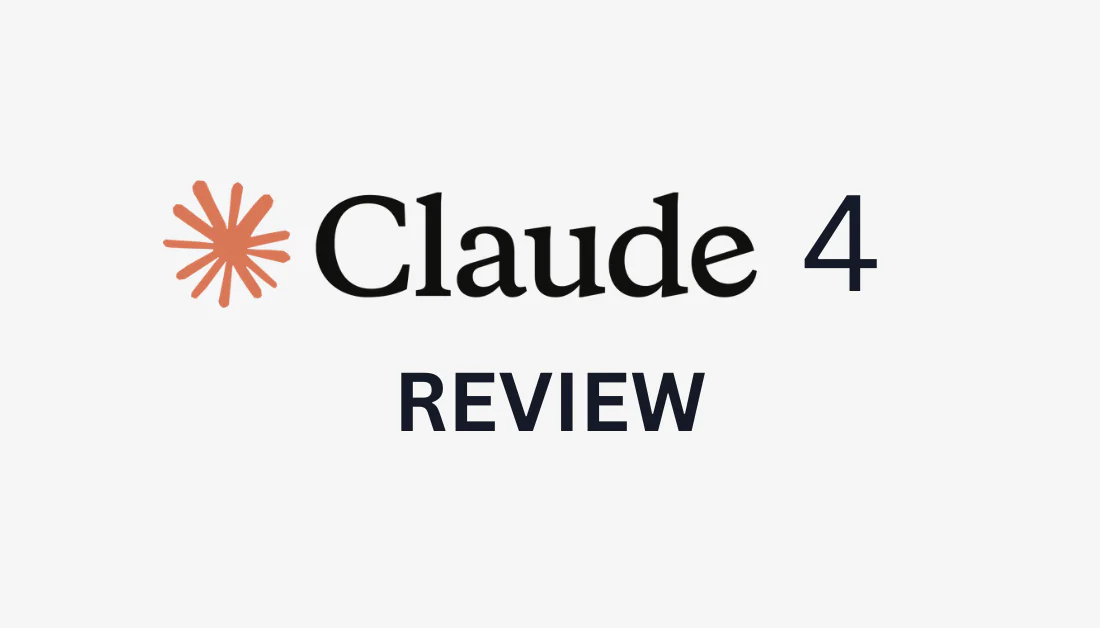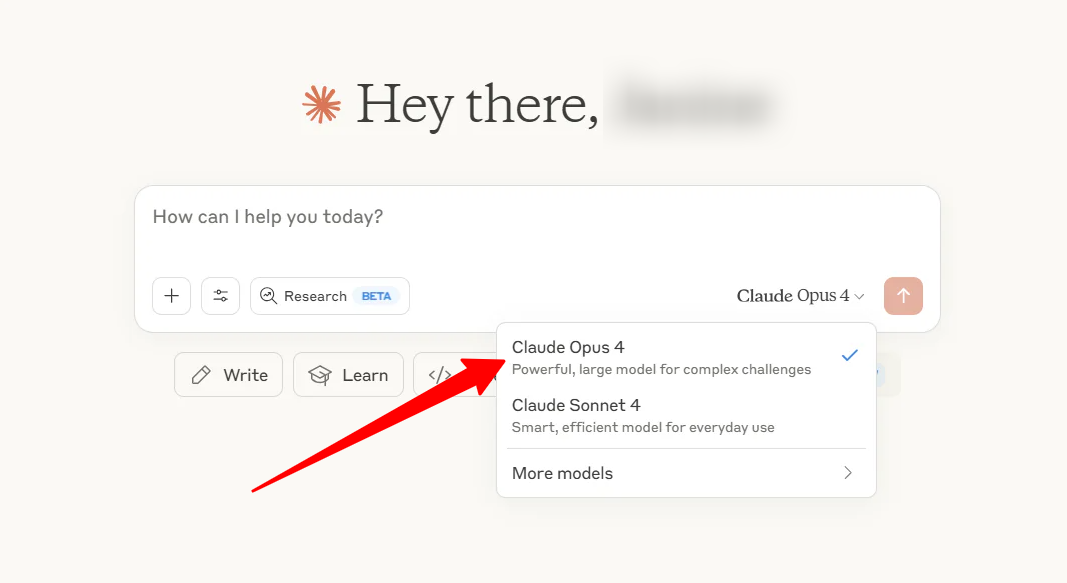AI Tools 101
Claude 4 Review: Smarter Than ChatGPT? I Was Shocked
Unite.AI is committed to rigorous editorial standards. We may receive compensation when you click on links to products we review. Please view our affiliate disclosure.

Have you ever felt like most AI tools are either too simple or too technical to bother with? Gartner highlights that digital workers want more intuitive, personalized, and empowering experiences from workplace AI applications. That’s where Claude 4 steps in.
Whether you’re building software, writing long-form content, researching deeply technical topics, or juggling workflows across teams, Claude 4 doesn’t just keep up. It guides, explains, and adapts. And with Sonnet 4 available for free, it’s more accessible than ever.
In this Claude 4 review, I’ll discuss the pros and cons, what it is, who it’s best for, and its key features. Then, I’ll test Sonnet 4 and Opus 4 to give you an idea of what they are capable of.
I’ll finish the article by comparing Claude 4 with my top three alternatives (Google Gemini, Microsoft Copilot, and Perplexity AI). By the end, you’ll know which tool is right for you!
Verdict
Claude 4 stands out with excellent performance in coding, reasoning, and workflows. It gives quick or deep responses, effortlessly handles long inputs, and keeps tasks flowing smoothly. While it might be overkill for simple tasks, its overall power and versatility make it a strong choice for serious work.
Pros and Cons
- Outperforms many competitors on coding and reasoning benchmarks like SWE-bench and TerminalBench.
- Switch between fast replies and deeper thinking based on task complexity.
- Supports up to 200K tokens for long documents and code analysis.
- Excels in autonomous workflows, app development, and RPA.
- Sonnet 4 is free on Claude.ai; Opus 4 is available for advanced use.
- Useful for coding, research, writing, support, data tasks, and more.
- Better memory and tool use for smoother task flow.
- It can be overkill for simple tasks.
- Still makes occasional errors.
- Opus 4 is expensive and requires a paid account.
- Limited by its training data, which may miss niche or emerging topics.
What is Claude 4?
Here’s what Claude Opus 4 and Sonnet 4 are all about.
Claude Opus 4

Claude Opus 4 is the latest and most advanced AI model from Anthropic. It’s designed for sophisticated reasoning, advanced coding, and complex agent workflows.
Claude Opus 4 is known as the top coding model. It handles long, complicated tasks well and can work for hours without losing performance. It’s best for deep thinking, large-scale code changes, and extended research sessions.
What Makes Claude Opus 4 Different
Anthropic incorporates a hybrid reasoning approach with its multi-layered reasoning system that thinks through problems step-by-step. For example, it doesn’t just spit out code. It explains why it chose specific approaches and even catches its own potential mistakes.
The 200K context window is also a game changer. For example, you can throw an entire codebase at it with documentation, and it’ll maintain coherence throughout. Compare that to earlier models that would start hallucinating after a few thousand tokens.
The enhanced capabilities, like the multimodal processing, also work well. For example, you can feed it technical diagrams alongside code, and it’ll understand the relationships between visual elements and implementation details.
If you need an AI that you can trust with important work, Claude Opus 4 is an excellent choice. For casual use, it’s probably overkill. But for professional applications where accuracy matters more than speed, Claude Opus 4 is making a strong case for itself.
Claude Sonnet 4

Claude Sonnet 4 is the smaller, more efficient model in Anthropic’s Claude 4 family. It’s designed for general-purpose AI tasks such as coding, writing, question answering, and data analysis. It’s available to free users, making it accessible for a wide range of applications.
Claude Sonnet 4 is made for daily use, with a strong balance of performance and cost. Meanwhile, Claude Opus 4 is best for more complex and demanding tasks.
Where Claude Sonnet 4 Fits in the Ecosystem
With Sonnet 4, Anthropic isn’t targeting the researchers who need maximum power (that’s for Opus to worry about) or the casual users who just want to chat. They’re targeting that massive middle ground: developers, content creators, small businesses, really anyone who needs reliable AI.
Improvements from Claude Sonnet 3.7
Coming from Claude Sonnet 3.7 to 4, the reasoning feels more structured. It’s like it’s actually thinking through problems. For example, if you throw some complex coding scenarios at both versions, I’ve found that Sonnet 4 provides better explanations for its choices.
The hybrid reasoning capabilities work well for practical tasks. For code reviews, it catches logical errors that previous versions missed entirely.
The 200K context window is great for business applications. For example, you can load entire project specifications along with existing code, and it’ll maintain context throughout the conversation.
Sonnet 4 vs. GPT-4 vs. Gemini
When comparing Sonnet 4 to GPT-4 and Gemini, GPT-4 still has better creative writing capabilities. Meanwhile, Gemini’s Google integration is hard to beat if you’re already in that ecosystem.
Where Sonnet 4 shines is consistency. It’s less likely to hallucinate than some competitors, which matters when you’re using it for work that has consequences.
Sonnet 4 For Businesses
For high-volume applications, the cost-per-token ratio compared to performance is competitive. If you’re processing lots of documents or doing repetitive AI tasks, those savings add up fast.
Plus, the API integration setup is smooth. It only takes a few minutes, and the documentation explains things in plain English.
Bottom Line
Ultimately, Claude Sonnet 4 isn’t trying to be everything to everyone. It’s designed for people who need reliable AI assistance without the premium price tag. If you’re building applications or using AI for actual work, it’s worth serious consideration.
The sweet spot seems to be businesses that need AI capabilities but aren’t massive enterprises with unlimited budgets. It’s professional-grade performance at a price point that makes sense for regular use.
Who is Claude 4 Best For?
Here are the best types of people who should use Opus 4 and Sonnet 4.
Opus 4
- Engineers & developers can use Claude Opus 4 to write code, clean up large codebases, and manage complex software projects.
- Researchers & analysts can use Claude Opus 4 to run deep research and analyze data.
- Large enterprises can use Claude Opus 4 to automate workflows, fix bugs, and improve code quality.
- Teams working on agentic systems can use Claude Opus 4 as a “sub-agent” within larger workflows to handle multi-step processes.
- Enterprise platform users can use Claude Opus 4 to launch AI solutions through Amazon Bedrock, Google Cloud, and more.
Sonnet 4
- Developers can use Claude Sonnet 4 to get coding help, review code, and build apps. It even powers GitHub Copilot’s new coding agent.
- Businesses can use Claude Sonnet 4 to automate tasks like chatbots and content generation at scale.
- Content creators can use Claude Sonnet 4 to quickly write documents, marketing copy, and creative content.
- Startup and company teams on a budget can use Claude Sonnet 4 to access strong AI performance at a lower cost than Opus 4.
- Anyone can use Claude Sonnet 4 on Claude.ai for free, whether for casual tasks or professional projects.
Claude 4 Key Features
Here are Claude 4’s key features to be aware of.
Claude Opus 4
- Coding & Automation: Great at advanced coding, smart searches, and completing complex tasks.
- Long-Task Performance: Stays accurate and focused for hours, handling thousands of steps on its own.
- Flexible Reasoning: Offers quick replies or deep thinking, based on what’s needed.
- Huge Context Window: Can handle up to 200K tokens, keeping lots of information in one session.
- Tool Integration: Uses web tools, APIs, GitHub, and VS Code to solve real-world problems.
- Smart Memory: Learns from files and data to remember key information and improve over time.
- Safe & Trustworthy: Built with strong safety checks and aligned with AI standards.
- Easy Access: Available on Anthropic’s API, Amazon Bedrock, Google Cloud, and more.
Claude Sonnet 4
- Follows Complex Instructions: Great for code reviews, bug fixes, and customer support.
- Flexible Response Modes: Offers quick replies or deeper thinking (extended thinking), depending on the task.
- Handles Large Inputs: 200K token context lets it process long documents or large codebases.
- Uses Tools in Parallel: Search the web or use APIs while maintaining task memory.
- Tool Integration: Combines reasoning with tools for complex workflows.
- Built for Heavy Use: Strong performance in real-world coding and support tasks.
- Widely Available: Works on Claude.ai, API, Amazon Bedrock, Google Cloud, GitHub Copilot, and more.
How to Use Claude 4
Here’s how to use Claude Opus 4 and Sonnet 4. Sonnet 4 can be used for free, but if you want to use Opus 4, you’ll need access to a paid account.
Claude Opus 4

I started by going to claude.ai and selecting “Claude Opus 4” from the model options.

Note that under the empty text prompt field are different settings you can adjust:
- Upload a file
- Take a screenshot
- Add from GitHub
- Add from Google Drive
- Use a project
- Use a style
- Turn on/off extended thinking and web search
- Connect Drive, Gmail, or Calendar search
- Add integrations
- Turn on/off integrations
- Example prompts for writing, learning, coding, and life
- Connect apps

To see what Claude Opus 4 is capable of, I gave it the following prompt:
“You’re a senior software architect tasked with modernizing a 10-year-old enterprise web application built with legacy Java and jQuery. Write a detailed migration plan to convert the codebase to a modern tech stack (e.g., React, TypeScript, and Spring Boot). Include phased steps, key challenges, risk mitigation strategies, and code samples for critical components. Then simulate a 2-hour stakeholder Q&A session covering technical, business, and security concerns.”

Minutes later, Claude Opus 4 generated exactly what I’d asked in extreme detail. I actually couldn’t believe how comprehensive it was. This is not something a senior software architect could whip up in minutes!
Claude Sonnet 4

I started by going to claude.ai and selecting “Claude Sonnet 4” from the model options.

Next, I pasted the following prompt to see what Claude Sonnet 4 was capable of:
“Act as a research assistant. Summarize the key insights from three research papers on AI alignment published after 2022. Then compare their approaches, highlight unresolved challenges, and propose a novel solution that synthesizes their ideas. Keep the tone clear and professional, and limit the output to under 800 words.”

Seconds later, Claude Sonnet 4 did exactly what I asked. It gathered research, summarized the key insights, and compared them. Once again, this type of quick and accurate research is not something you’re average research assistant would be capable of!
Overall, Claude 4 impressed me with its ability to easily handle complicated tasks and generate highly detailed, structured outputs in minutes. Whether using Opus for deep technical planning or Sonnet for research, the results felt like expert-level work delivered at lightning speed.
Top 3 Claude 4 Alternatives
Here are the best Claude 4 alternatives:
Google Gemini
The first Claude 4 alternative I’d recommend is Google Gemini. Gemini is a quick and efficient multimodal AI platform that integrates with Google’s ecosystem. It processes images, video, and text in real-world workflows.
Gemini stands out with its lightning-fast processing speeds in certain models. It delivers near-instant responses and efficiently handles large volumes of data. Plus, it seamlessly integrates with Google Workspace, Docs, Sheets, and other Google services. It is also multimodal by design, making it ideal for projects involving images or video.
Meanwhile, Claude 4 prioritizes safety, reasoning, depth, and code quality. It handles multi-step tasks well, including browser tasks, documentation, and debugging for software projects.
For fast processing, high-volume tasks, multimedia content, and Google ecosystem integration, choose Gemini. For deep reasoning, reliable code, and strong safety features, choose Claude!
Microsoft Copilot
The next Claude 4 alternative I’d recommend is Microsoft Copilot. Copilot offers a deeply integrated AI assistant experience within the Microsoft 365 ecosystem. It makes it easy to automate tasks, draft documents, and analyze data right inside familiar apps like Word, Excel, and Teams.
On the one hand, Microsoft Copilot stands out with its seamless integration into Office apps and context-aware AI assistance without leaving your workflow. It automates tasks, generates insights from Excel data, and collaborates within Microsoft Teams.
Meanwhile, Claude 4 stands out with its large context window and strong emphasis on safety and ethics. It’s a great choice for sensitive, detailed, or highly nuanced work.
For deep integration with Microsoft tools, choose Microsoft Copilot. For long-context understanding and a focus on ethics, choose Claude 4!
Perplexity AI
The final Claude 4 alternative I’d recommend is Perplexity AI. Perplexity AI gives accurate, real-time answers with web searches and clear citations.
Perplexity AI stands out with its real-time search capabilities. It’ll give you current facts, statistics, and news, all with source citations. It’s great for asking fact-based questions and quickly receiving summaries.
Meanwhile, Claude 4 excels in creative writing, coding, and complex reasoning. With its large context window, it can maintain long, detailed conversations by remembering and referencing a substantial amount of prior information within the same session.
For real-time research, fact-checking, and cited answers, choose Perplexity AI. For creative writing, coding, and in-depth dialogue, choose Claude 4!
Read my Perplexity AI review or visit Perplexity AI!
Claude 4 Review: The Right Tool For You?
After using Claude 4, I walked away impressed (especially with the depth and detail of Opus 4). It didn’t just follow instructions, but it reasoned through them. That alone makes it stand out from nearly every other AI I’ve tested.
On the other hand, Claude Sonnet 4 has become a reliable day-to-day tool. It’s fast, consistent, and costs less than Opus 4. It nails summaries, explains code with clarity, and feels more thoughtful than most general-purpose AIs.
But is Claude right for you?
If you’re looking for depth, accuracy, and something you can trust to assist with real work, yes. But if your needs lean toward speed, integration, or gathering factual information, other tools like these might be a better fit:
- Google Gemini is best for those already using Google Workspace who want to enhance their collaboration with AI.
- Microsoft Copilot is best for Office users looking to streamline their work inside Word, Excel, and Teams.
- Perplexity AI is best for fast answers with citations and real-time research across the web.
Thanks for reading my Claude 4 review! I hope you found it helpful.
Claude 4 offers Sonnet 4 for free, but you’ll have to be on one of the paid plans to access Opus 4. Try it for yourself and see how you like it!
Frequently Asked Questions
Is Claude AI genuine or fake?
Claude AI is a genuine artificial intelligence system developed by Anthropic. It’s designed for safe, reliable, and intelligent conversation. It is not a fake or fraudulent tool, but rather a real AI model widely used for various professional and personal applications.
What is a Claude 4 reasoning model?
A Claude 4 reasoning model is a hybrid AI system that delivers both near-instant responses and deeper reasoning for complex tasks. It excels in coding, problem-solving, and maintaining context over long conversations and multi-step workflows. It prioritizes safety, accuracy, and structured outputs.
Is Claude 4 any good?
Claude 4 is widely recognized as one of the best AI models available. It excels in coding, reasoning, problem-solving, and long-form content creation. Both Opus 4 and Sonnet 4 deliver excellent performance on industry benchmarks like SWE-bench and Terminal-bench. Its strong emphasis on safety, ethics, and reliability also makes it a trusted choice.
Is Claude 4 available?
Yes, Claude 4 (including Claude Opus 4 and Claude Sonnet 4) is available to users worldwide. Claude Sonnet 4 can be accessed for free on Claude.ai, while Opus 4 is available through paid plans.














